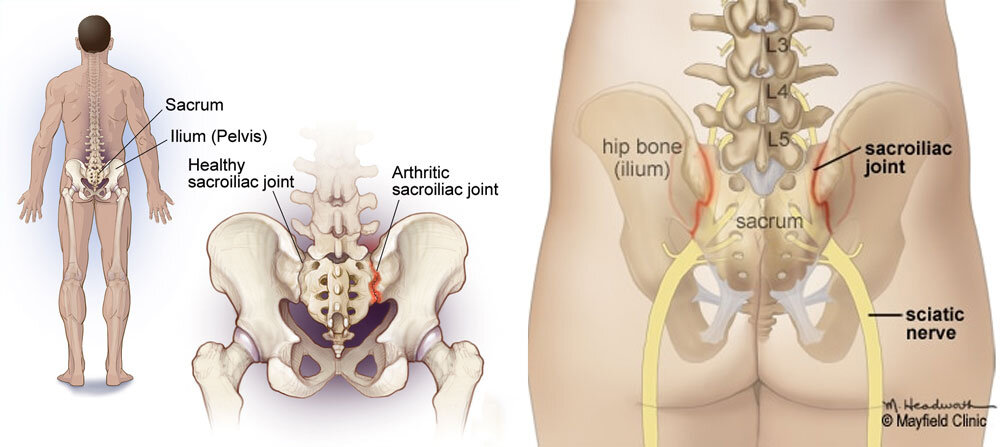Understanding Sacroiliac Joint Injection Procedures
The sacroiliac (SI) joints are found at the base of the spine at the convergence of the sacrum and ilium bones. The joints where these two bones come together can become injured or inflamed, causing pain that is usually centered over the joint itself with occasional radiation downward. Injections are given to both diagnose and manage sacroiliac joint pain, providing several weeks or months of symptomatic relief.
Did you know?
When sacroiliac joint injections are used to diagnosed SI pain, a numbing medication is administered to the injection site to determine that the SI joints are the source of a patient’s discomfort. If patients experience relief from the numbing medication, slow release anti-inflammatory steroids will be administered to reduce inflammation and provide extended pain relief. A patient can undergo additional SI joint injections as needed – up to three in a six-month period.
For those patients that only have a short term response to the cortisone injection a radiofrequency procedure can be performed that can provide several months of relief. In this procedure the sensation nerves that go to the joint can be heated up or burned so that the pain signals are lessened to the brain. The nerves do eventually regrow and with that the pain can return.
Frequently Asked Questions
Am I a candidate for sacroiliac joint injections?
An SI injection may be right for you if you have chronic stemming from some type of injury or agitation in the sacroiliac joints. Injections are generally reserved for patients who have not achieved significant pain relief from more conservative treatment measures. Usually pain from the SI joint is located right over the joint and may radiate downward from there.
The only way to know for sure whether an SI injection is right for you is by scheduling a consultation with Dr. Sobel.
What should I expect during my sacroiliac joint injection?
You will be awake during an SI injection although the injection site will be anesthetized and you’ll have the option of being lightly sedated. Dr. Sobel will use x-ray imaging to carefully guide a fine needle into the sacroiliac joint and administer the numbing and anti-inflammatory medication. The procedure takes just a few minutes minutes to complete and is performed on an outpatient basis in an outpatient surgical center.
What types of results can I expect from a sacroiliac joint injection?
SI joint injections involve the use of slow-release medications that may take several days to begin taking effect. Once pain begins to subside, most patients can expect to experience several weeks or even months of pain relief. Although SI joint injections cannot cure injuries or complications of the sacroiliac joints, they can significantly improve the pain and quality of life for a person suffering from chronic pain.
Click below to see a sample list of medication that needs to be stopped before the procedure.

